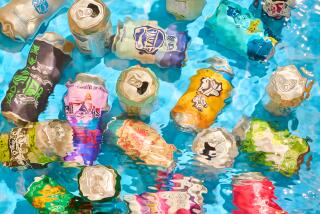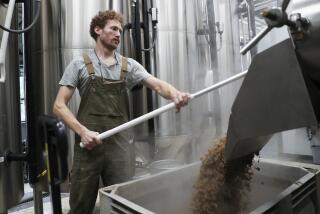How to age beer, and why you should probably try it
When it comes to the bold and vivid flavors of craft beer, the rule is fresher is better. The ravages of time are not kind to most craft beer styles, especially the popular hoppy brews, and you want to experience a beer the way the brewer intended. There are, of course, exceptions to the rule, and many dedicated beer lovers enjoy exploring the flavors of a carefully aged beer.
Some who age their own beer may take a page from the wine lover’s handbook and hoard bottles in home cellars, shepherding their treasures carefully into the future as time and oxygen transmogrify the ales. Cellaring craft beer can be as rewarding as it is easy to start; all you need is space and time (and a few simple guidelines to follow).
What does aging do to a beer?
The first crucial rule of aging beer is irrefutable: Age doesn’t necessarily make a beer better — it changes the flavor. Whether that new flavor is “better” is up to you. Usually, as with hoppy beer, different means worse as oxidation dulls flavors and produces new and distracting flavor compounds. But with some styles — the old ales and barleywines of the British beer tradition, for instance — the flavors mellow instead of dull, and the oxidative additions harmonize instead of clash.
There are a few qualities that make a beer better to cellar than others, but no one besides you.can say if a beer improves with age Which brings us to the second rule of aging beer: Don’t age something that you haven’t tasted fresh. Without a familiarity with the baseline flavor of a particular brew, you won’t know whether the months or years it’s spent stashed away made it any more enjoyable to drink. With that out of the way, let’s take a look at what beers you should start with and where you should stash them for the best results.
What’s the best beer to age?
The general idea when selecting a brew to cellar is to pick something with a moderately high alcohol content ( around 8% or higher) and a malt-leaning flavor. Other candidates are sour ales and bottle conditioned beers, such as many Belgian ales; these contain active yeast and bacteria that can continue to develop the flavors in the bottle and protect against excessive oxidation. Styles such as the imperial stout, barleywine, Belgian quadruple, strong dark ales, funky lambics and other wild ales usually develop positively after for a long nap in a dark cupboard.
Where to age your beer
As to where to hide away your candidates, the rules are similarly simple. You want someplace that’s dark and relatively cool, where the brews within won’t experience too much of a temperature fluctuation. The ideal cellar temperature for aging beer is between 50 and 60 degrees, though you can get away with warmer or cooler temperatures. Beer is remarkably resilient; you don’t need a dedicated wine fridge or a space in your basement — a closet or cabinet will suffice.
Don’t fret about storing bottles standing versus storing them on their sides — it may be a hotly debated topic among those devoted to aging beer, but it truly makes little difference, especially on a small scale and for (relatively) short waits. Let the guy with a hundred bottles of decade-old gueuze worry about cork-taint and sediment — you can get away with a case box tucked into the back of the broom closet.
Even storing a bottle or two in the way back of your refrigerator will work: The change in flavor will be slowed by the cooler temperature (likewise, warmer temperatures will accelerate the flavor changes — especially those due to oxidation).
How long you should age the brew?
Six months or so is enough time for age to impact a beer’s flavor. The flavor and aroma of hops will fade, the bitterness from hops will mellow, as will the alcoholic heat of strong brews. The flavors of added ingredients such as coffee, chocolate or spices will also fade into the background. Sherry-like aromas will develop and the flavors of dried fruit, tobacco and vanilla will intensify. Any sharpness or jagged edges of a brew’s flavor will round out.
The best examples of a well-aged beer are less intense but more complex than their fresh counterparts. But again, that doesn’t mean an old beer is a “better” beer. Perhaps you prefer the edgy and intense flavors of a fresh stout to the year-old alternative. Developing your palate and deciding where your preferences lie is a great reward for experimenting with cellaring beer at home.
The best way to start is a shopping trip to the beer shop. Pick up a six-pack of an imperial stout or a barleywine (Sierra Nevada’s Narwhal and Bigfoot are basically made for this experiment), and find a place where you can forget about them for a year.
Unless you’re intimately familiar with the beer you chose, open one bottle and enjoy it fresh. Spend some time with the glass to consider the flavor. Is the alcoholic bite intense? Is the flavor balanced and cohesive? Is there any element that sticks out with each sip? Maybe make some notes of your impressions, then pack away the remaining two or three bottles in the closet.
Revisit the stash every few months and make some notes on how the beer has progressed. Does it taste different? Do you like it more than the fresh bottle? But be warned: Enjoying the allure of gently aged beer is something that can turn a preference for craft beer into a full blown hobby.
Don’t feel like fussing with cellaring your own brews? There’s a shortcut: vintage beers at bars and restaurants. Ask for the bottle list at some of L.A.’s notable craft beer destinations, such as Blue Palms Brewhouse in Hollywood or the Lucky Baldwins pubs in the San Fernando Valley. and you may find some vintage treats — just be ready to pay a premium for the time those brews have spent in someone else’s cellar.
Twitter: @latimesfood
ALSO
Beyond brown rice: How to make rice bowls out of specialty rice
That amazing Father’s Office burger? It’s headed to downtown L.A.
What makes a perfect grilled cheese sandwich? We ask the chef behind the Grilled Cheese Truck
More to Read
Eat your way across L.A.
Get our weekly Tasting Notes newsletter for reviews, news and more.
You may occasionally receive promotional content from the Los Angeles Times.










